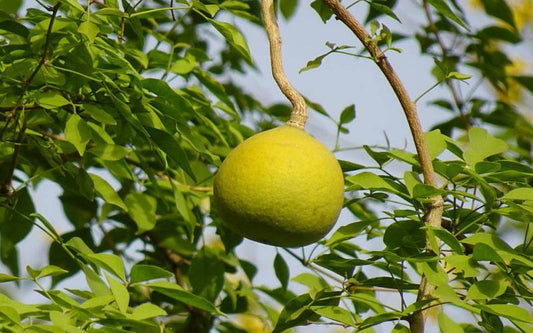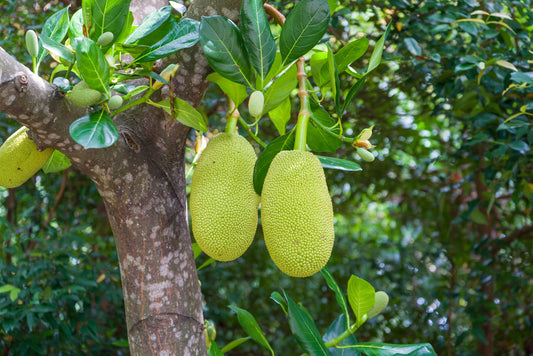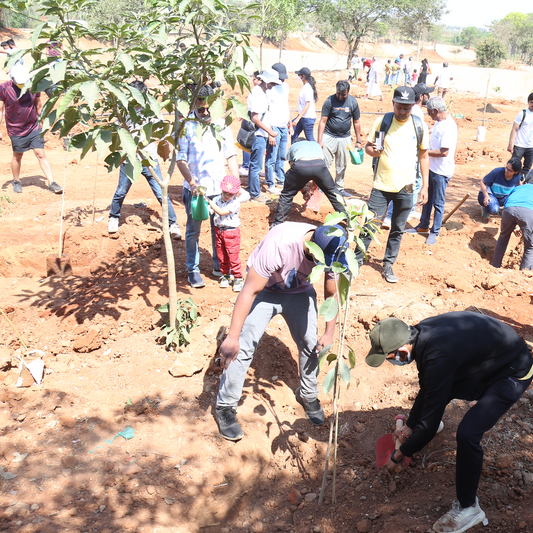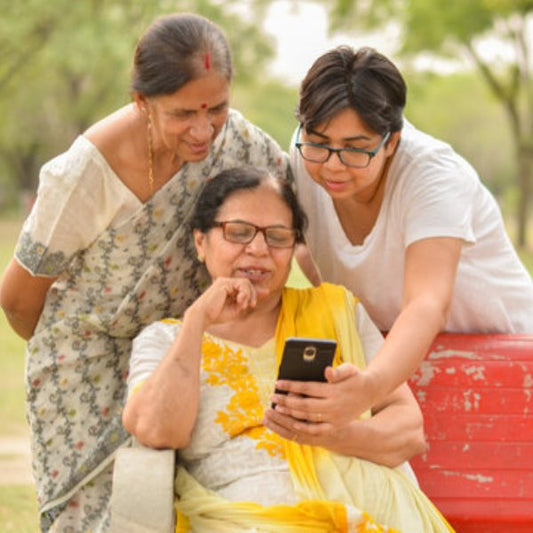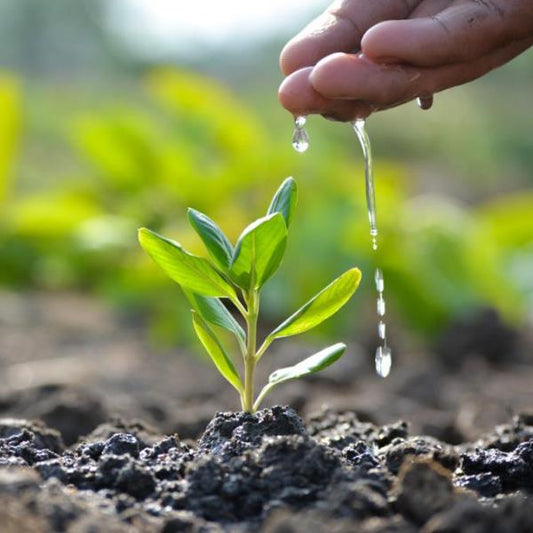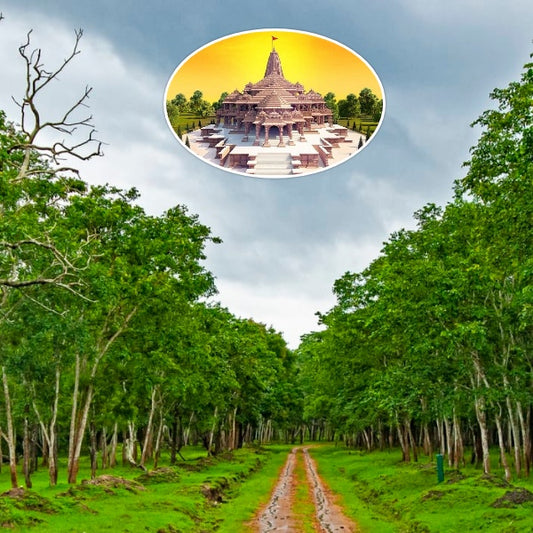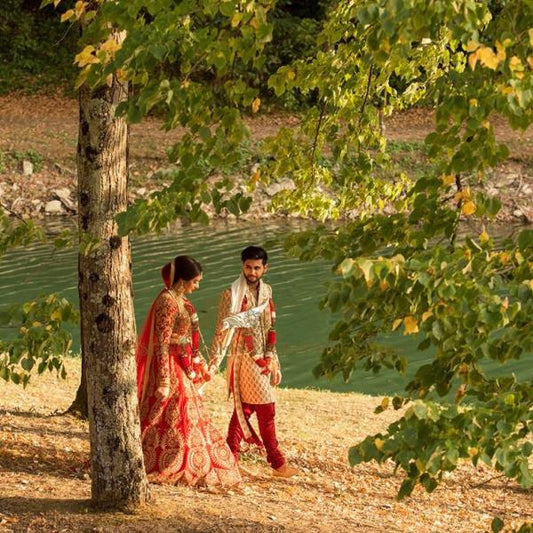Roots of Ayodhya: Forest by Radhika Deshpande
Radhika Deshpande's tree plantation drive at Tulsi Janmbhumi Rajapur Sukarkhet Vikas Khand Paraspur, Tahsil Karnailganj, Gonda, Uttar Pradesh 271504, Read more
Plantation Site Gallery
Project Update 1
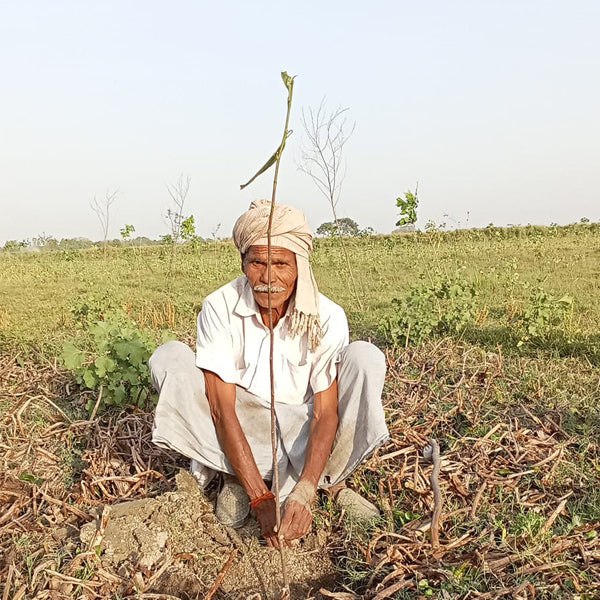




Forest with 108 Trees planted
Tree certificates issued to
*data refreshed every hour
*data refreshed every hour
Top Trees Planted
Roots of Ayodhya: Forest by Radhika Deshpande
Radhika Deshpande's tree plantation drive at Tulsi Janmbhumi Rajapur Sukarkhet Vikas Khand Paraspur, Tahsil Karnailganj, Gonda, Uttar Pradesh 271504, on April 23, 2024, marked a significant moment blending religious reverence, astrological beliefs, and environmental stewardship. With the support of GrowBillionTrees, Radhika planted a total of 108 trees, including Mango, Jackfruit, and Bealpatra, each carrying religious significance and environmental importance.
Plantation Location:
Tulsi Janmbhumi Rajapur Sukarkhet Vikas Khand Paraspur, Tahsil Karnailganj, Gonda, Uttar Pradesh 271504
Trees Planted:
Total 108 trees planted of following species.
Mango
In many cultures, the mango tree is revered as a symbol of abundance, fertility, and prosperity. It holds religious significance in Hinduism and Buddhism, often associated with gods and goddesses. From an environmental perspective, mango trees contribute to biodiversity, provide shade, and yield nutritious fruit, supporting local ecosystems and livelihoods.
Jackfruit
The jackfruit tree is considered auspicious in various religious traditions and is often associated with fertility and sustenance. In Hinduism, it is believed to be the abode of the elephant-headed deity Ganesha. Environmentally, jackfruit trees are valuable for their large, versatile fruits, which provide food security, and their sturdy wood, which is used for construction and furniture, promoting sustainable resource use.
Bealpatra (Bael)
Bealpatra, also known as Bael or Bilva, holds immense religious significance in Hinduism, where its leaves, fruit, and roots are used in rituals and ceremonies. It is associated with Lord Shiva and is believed to have medicinal properties. From an environmental perspective, Bealpatra trees contribute to biodiversity, as they provide habitat and food for various species, while their medicinal value promotes human and ecosystem health.
Purpose of Plantation:
Astrological Significance
Radhika Deshpande's tree plantation drive is rooted in astrological beliefs, symbolizing alignment with celestial forces and cosmic harmony. Planting trees as per astrological recommendations is believed to bring prosperity, peace, and positive energy to the surroundings.
Religious Importance
The trees planted by Radhika Deshpande hold religious significance, serving as a sacred offering to the divine. In many religious traditions, tree plantation is considered a virtuous deed, fostering spiritual growth and promoting ecological balance.
Environmental Benefits
In addition to its astrological and religious significance, the tree plantation drive contributes to environmental conservation and sustainability. By planting trees, Radhika Deshpande aims to create an urban forest that serves as an Oxygen Park for the city, enhancing green cover and promoting biodiversity.
Environmental, Social, and Governance (ESG) Goals Covered:
Radhika Deshpande's tree plantation initiative aligns with several Environmental, Social, and Governance (ESG) goals, including:
Environmental Responsibility
Contributing to increasing green cover, promoting biodiversity, and fostering ecological resilience.
Social Engagement
Fostering community participation and raising awareness about the importance of environmental conservation and religious traditions.
Economic Sustainability
Promoting sustainable practices that enhance economic viability and long-term prosperity through ecological balance.
Importance of Tree Plantation
Tree plantation is not only a religious and astrological practice but also a crucial step towards environmental sustainability. By planting trees, individuals like Radhika Deshpande contribute to creating a greener and more harmonious environment, while also fulfilling spiritual and cultural obligations. Tree plantation activities provide an opportunity to connect with nature, promote environmental awareness, and strengthen community bonds.
Summary of Plantation Activity
Radhika Deshpande's tree plantation drive exemplifies a harmonious blend of religious beliefs, astrological practices, and environmental stewardship. With the support of GrowBillionTrees, she not only honored her spiritual and astrological convictions but also contributed significantly to the city's green cover and biodiversity. This initiative underscores the power of individual action in creating a sustainable and spiritually enriching environment.
Trees for Corporates
Trending
Most Popular
FAQ
What is the significance of tree plantation?
Tree plantation is vital for environmental sustainability as it helps combat climate change, promote biodiversity, prevent soil erosion, and enhance ecosystem resilience.
How does tree plantation benefit the environment?
Tree plantation benefits the environment by sequestering carbon dioxide, releasing oxygen, improving air quality, providing habitat for wildlife, and regulating climate patterns.
What are the different types of tree plantation projects?
Tree plantation projects include afforestation (planting trees in areas without previous forest cover), reforestation (restoring deforested or degraded areas), and agroforestry (integrating trees into agricultural landscapes).
How does tree plantation contribute to sustainable development?
Tree plantation contributes to sustainable development by supporting ecosystem services, conserving natural resources, providing livelihood opportunities, and enhancing community resilience to environmental challenges.
What are the key factors to consider when planning a tree plantation project?
Important factors to consider include selecting appropriate tree species, ensuring proper site preparation, considering local ecological conditions, engaging stakeholders, and implementing effective monitoring and maintenance practices.
How can individuals participate in tree plantation efforts?
Individuals can participate by volunteering for tree planting events, supporting tree planting initiatives financially or through donations, planting trees in their own communities or yards, and raising awareness about the importance of trees.
What are the common challenges faced in tree plantation projects?
Common challenges include inadequate funding, lack of community engagement, issues with land tenure and ownership, pests and diseases affecting tree growth, and insufficient long-term monitoring and maintenance.
How can tree plantation projects contribute to biodiversity conservation?
Tree plantation projects can enhance biodiversity by providing habitat for diverse plant and animal species, creating ecological corridors, restoring degraded ecosystems, and promoting the conservation of native flora and fauna.
What is the role of tree plantation in climate change mitigation?
Tree plantation helps mitigate climate change by sequestering carbon dioxide through photosynthesis, reducing greenhouse gas emissions, enhancing carbon storage in biomass and soil, and mitigating the impacts of extreme weather events.
How can businesses and organizations support tree plantation initiatives?
Businesses and organizations can support tree plantation initiatives by implementing corporate social responsibility (CSR) programs, partnering with environmental NGOs, funding reforestation projects, and integrating sustainable land management practices into their operations.
Tree Plantation
Tree plantation plays a crucial role in environmental conservation and sustainability. By strategically planting trees, we contribute to carbon sequestration, air purification, and biodiversity conservation, aligning with global sustainability goals.
Agroforestry
Agroforestry is an innovative land use practice that integrates trees into agricultural landscapes, offering multiple benefits such as improved soil health, enhanced crop productivity, and diversified income streams for farmers. Embracing agroforestry promotes sustainable land management and resilience to climate change.
Reforestation
Reforestation initiatives are vital for restoring degraded ecosystems, mitigating climate change impacts, and preserving biodiversity. By replanting trees in deforested or degraded areas, we enhance ecosystem services, restore habitat for wildlife, and support local communities' livelihoods.
Sustainable Development Goals (SDGs)
Our tree plantation projects are aligned with the United Nations' Sustainable Development Goals (SDGs), particularly Goal 13 (Climate Action), Goal 15 (Life on Land), and Goal 11 (Sustainable Cities and Communities). By addressing these goals, we contribute to global efforts for a more sustainable and equitable future.
Environmental Stewardship
Environmental stewardship is at the core of our tree plantation initiatives. We prioritize responsible land management practices, biodiversity conservation, and community engagement to ensure the long-term health and resilience of ecosystems. Our commitment to environmental stewardship fosters a healthier planet for current and future generations.
Corporate Social Responsibility (CSR)
As part of our corporate social responsibility (CSR) efforts, we actively engage in tree plantation projects that benefit both the environment and local communities. By investing in sustainable forestry practices, we demonstrate our commitment to environmental sustainability, social well-being, and ethical business practices.
- Choosing a selection results in a full page refresh.
- Opens in a new window.


